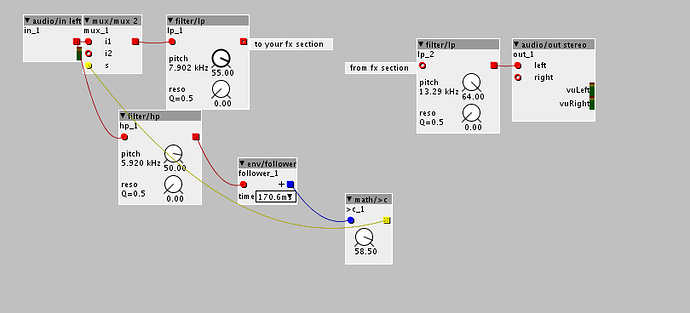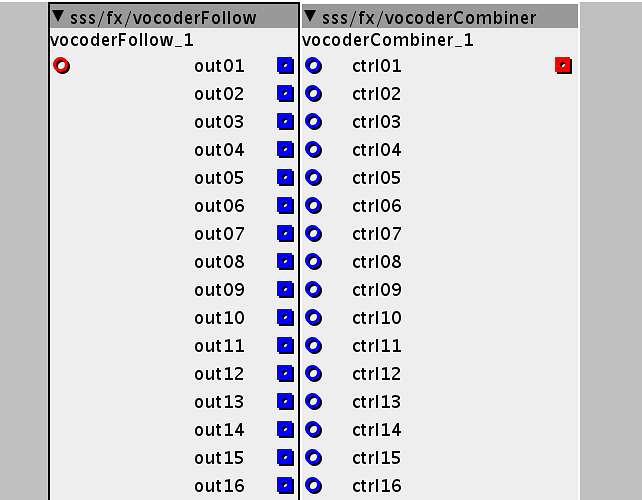Hello all,
I just got an axoloti recently for an installation project I was asked to help with on technical set up. Unfortunately I didn't have much time to get to learn the axoloti before having to do the installation, so it was a matter of just getting the essentials up and running and now the board is already installed there while I would still like to make some tweaks, specifically in preventing feedback.
It is a touchy installation with a large and fairly live room mic'ed up and playing back the room into the space through an array of various small speakers. The sound is going through the axoloti first on a delay line and granulation effect, going for somewhat of a Lucier type thing. While the speakers are pretty small and I have tuned volume levels as best I can to prevent feedback from happening it is of course still possible. While I have instructions for the gallery technicians if there is a problem of how to reset the audio if it does happen, with the installation running for 6 weeks I'd like to try and be able to automate some sort of feedback prevention, but I haven't had the time to learn the axoloti that well and was hoping some more experienced users here might have some tips...
My idea was to do a pretty crude implementation of just trying to shut the audio off either at the input or output automatically for 6-8 seconds (the time it takes for the feedback to dissipate when it occurs) every 3-5 minutes. It would be long enough and irregular enough that no visitors would notice and in case some major feedback did errupt somehow it wouldn't last more than a couple minutes before the cycle would automatically shut off and reset. Simple but effective and probably much easier than configuring some sort of reverse noise gate tuned for high frequencies or something like that. Going through all the objects I'm still a bit confused how to best do this...
Obviously I need some sort of VCA or gate, but to open and close it at the predetermined times I am finding tricky since I don't know all the objects and what they want signal wise yet... Unfortunately it seems that the LFOs don't actually run all that slow on the axoloti unless there is a way of making them slower than the knobs go. My idea was to basically just set a slow square LFO cycling at around 3-5 minutes like I need, set a very thin pulsewidth to equal around 6-8 seconds, invert the value and use that to control a VCA... but without a slow enough pulse width adjustable LFO that idea goes out the window.
Any recommendations or thoughts? Thanks!



 that does what you want. an envelope that goes low every 4.something minutes for 6-7 seconds.
that does what you want. an envelope that goes low every 4.something minutes for 6-7 seconds.